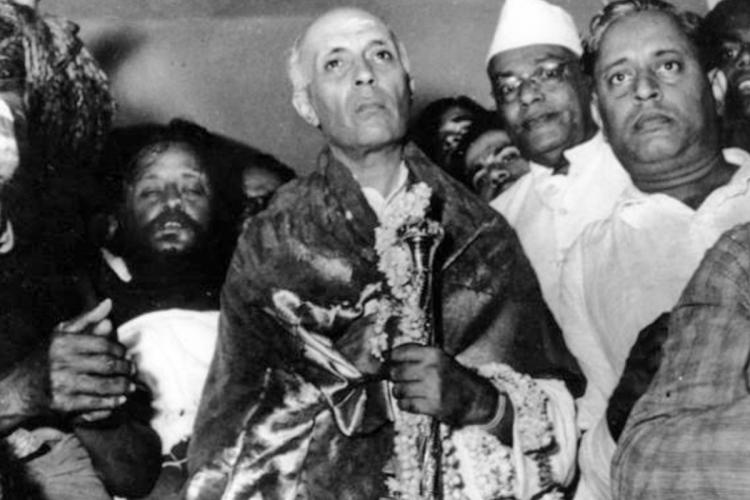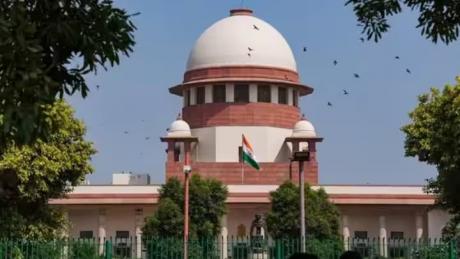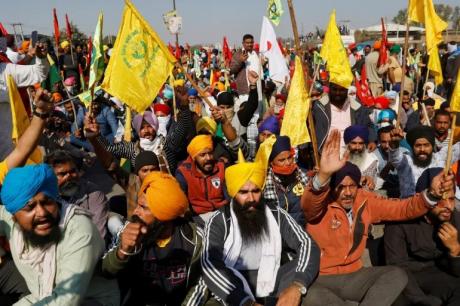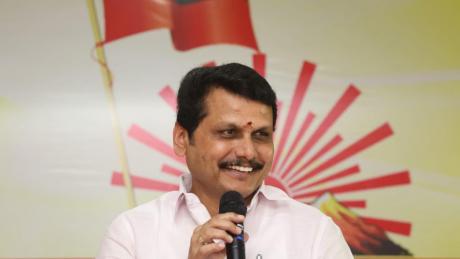The ruling BJP regime has been beefing up the arrangements to inaugurate the newly constructed Parliament building amidst a heated wave of opposition from various parties for the timing of the inauguration and for the Modi government's apparent disregard to the President. The new Parliament building will be inaugurated by Prime Minister Narendra Modi in the absence of about 19 opposition parties.
A league of these 19 parties had unanimoulsy come out and announced that they will not take part in the ceremony, which will be held on May 28, during the birth anniversary of Hindutva ideologue Savarkar. The opposition parties have been slamming the BJP regime for not letting the President, who is the head of the Parliament, to inaugurate the new building.
Though being collectively attacked by the parties, the BJP regime has reiterated that the Prime Minister will inauguare the Parliament building, with the event becoming the booster of Modi's self-image. While it is yet to be officially known whether the government will send an invitation to the President, the Modi administration has also been surfaced with flak over ignoring the Head of the State.
Amid these developments, Union Home Minister Amit Shah, in his recent press meet, has courted a fresh controversy by stating that the new Parliament will have a 'Sengol', a historical sceptre that was presented to India's first Prime Minister Jawaharlal Nehru, in its premises. Amit Shah went on to say weak claims that go against what's in the history. Shockingly, the BJP government has claimed that the Sengol was conferred to Nehru by Tamil Nadu's Thiruvavaduthurai Adheenam on the eve of Independence in 1947 and that Sengol has marked the moment of transfer of power between the British and India.
What's in the BJP's 'Sengol' story?
- The understanding of the Union government on the Sengol conferration to Nehru perhaps revealed that it has barked up the wrong tree. While the history indicates that the transfer of Sengol didn't mark the moment of transfer of the power, the Union government's feeble assertion has sparked a public outcry with several questioning the decision to place the Sengol in the Parliament would go against the democracy and mark the symbol of monarchical era.
- Amit Shah said that the Sengol replicates the culture of the Chola Dynasty in Tamil Nadu where such Sengols were common during the era ruled by the Kings. When India's independence from the British was announced, Tamil Nadu's Thiruvavaduthurai Adheenam pontiffs presented a Sengol as a symbol to mark the independence. However, a story from the Mutt had now given more weight to the BJP's claim that the Sengol had marked the moment of transfer of the power and that it's appropriate to place it in the new Parliament building.
- According to reports, the Adheenam has claimed that when India got independence, Jawaharlal Nehru spoke with C Rajagopalachari, often called Rajaji, who was the last Governor-General of India, about how to mark the transfer of power from British to India. It was said that Rajaji had suggested Nehru that he can receive a Sengol, which was a tool to mark the transfer of powers during the Chola dynasty. Rajaji said that Nehru can receive it from the Viceroy of India, Lord Mountbatten.
- The current Union government has claimed that after accepting the recommendation from Rajaji, Nehru told Rajaji to make arrangements to receive a Sengol, after which Rajaji reached out to the Thiruvavaduthurai Adheenam to make a Sengol in 1947. The Adheenam reached out to popular Vummiddi Bangaru Jewellers in Chennai to prepare a Sengol.
- While it is historically true that Nehru has received a historical sceptre from the Adheenam pontiffs, there is no records in history that he received it as a mark of transfer of power, as claimed by the BJP regime. Several reports have highlighted that the BJP government has made this weak claim based on an article by RSS ideologue S Gurumurthy in the magazine 'Thuglak' in May 2021 in which he had drawn a connection that the Sengol was given to Nehru as the moment of transfer of power.

- Several records say that the Sengol was presented to Nehru not by the Viceroy of India but by the Head of the Thiruvavaduthurai Mutt. It has sparked a question of how the presentation of a sceptre by a seer would mark the transfer of power. The claim from the BJP regime hasn't had a strong backing as there is no coverages in 1947 that Rajaji asked the Mutt to make a Sengol or Lord Mountbatten receiving it from the Mutt.
- Though sceptres were part of the Chola tradition, it had no connection to celebrate the transfer of power which leads us to assert that the BJP regime has made a wrong claim. According to the history, the formal transfer of power to India was a result of the Indian Independence Act 1947 of the Parliament of the United Kingdom. The Act was given a royal assent in July 1947 after which the power of officially transferred and that British-era Act was also scrapped on January 26, 1950 by the Indian Constitution.
- Before the establishment of the Parliament, it was the Constituent Assembly that was in force. The Constituent Assembly had selected the first cabinet and then, the Assembly led to the formation of what is now being called as Lok Sabha and Rajya Sabha of the Parliament. While that particular sceptre was been preserved at a museum, it has now been back to the national spotlight after the announcement from the BJP regime to place it in the new Parliament building and painting a weak claim that it had marked the transfer of power.
- It is pertinent to note that the moment of presenting Sengol to Nehru was not even a part of any official ceremony. After declaring the Independence, there were several religious rituals as part of celebrations and the handing over of the Sengol to Nehru was part of this unofficial ceremony and is no way stands as an evidence that it marked the moment of the transfer of power from the British to India, as claimed by the BJP regime.
- The gold-plated silver sceptre is five-feet long and has Nandi - bull deity on the top. While the announcement of placing the Sengol in the new Parliament was welcomed by the current pontiffs of Thiruvavaduthurai Adheenam, Congress party has slammed PM Modi for using the Sengol for its political gain. Responding to the Congress party, Amit Shah on Friday took to Twitter and wrote, "Why does the Congress party hate Indian traditions and culture so much? A sacred Sengol was given to Pandit Nehru by a holy Saivite Mutt from Tamil Nadu to symbolize India's freedom but it was banished to a museum as a walking stick."









Comments